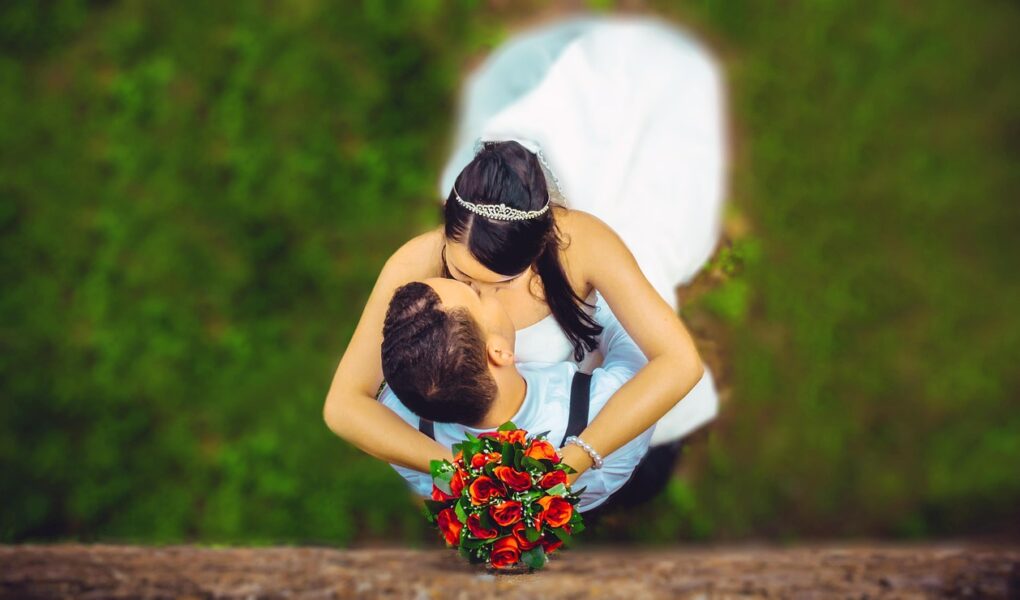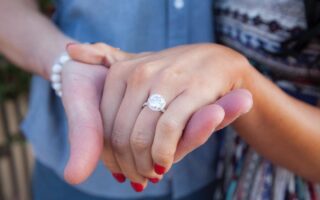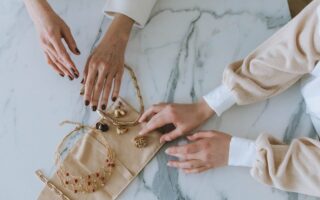The wedding day is a perfect blend of emotions, traditions and details that make every moment unique. Among these, jewellery plays a special role: not just accessories to complete the outfit, but true symbols of unity, elegance and charm. For British couples choosing Italy as the backdrop for their special day, jewellery can also serve as a cultural bridge between two traditions, a refined way of celebrating love through thoughtful style choices.
Wedding rings: the heart of tradition
Wedding bands are the ultimate symbol of a wedding, the tangible sign of eternal union. In Italy, as in the UK, the exchange of rings is the most emotional moment of the ceremony. Italian tradition tends to favour simple, smooth bands in yellow gold, often engraved on the inside with the partner’s name and the wedding date. That said, many couples choose to break with tradition, opting for more varied styles: rings with small set diamonds or versions in white gold or platinum.
In recent years, alternative materials like palladium and titanium have grown in popularity, appreciated for their modern feel and durability. The circular shape, with no beginning and no end, remains a symbol of eternity, a universal meaning that transcends cultures and borders.
Bridal jewellery: light and refinement
For the bride, jewellery is the final touch that enhances the dress and reflects her personality. In Italy, the preferred approach is one of elegance and subtlety, where harmony takes precedence over excessive detail.
Earrings
Earrings are often the go-to accessory: from classic diamond or pearl studs, perfect with an updo, to more elaborate drop earrings that add a touch of sparkle to simpler dresses.
Necklaces
The necklace should complement the neckline of the gown. A fine necklace with a pendant pairs beautifully with a sweetheart neckline, while a delicate string of pearls evokes timeless romance and tradition.
Bracelets
A slim bracelet, perhaps adorned with diamonds or coloured gemstones, offers a discreet yet elegant accent. Alternatively, many brides choose a family heirloom bracelet, rich in sentimental and symbolic value.
Hair accessories
Tiaras, hair clips or crowns with pearl and crystal detailing are especially appreciated in Italian weddings, particularly those held outdoors in villas or historic gardens. These accessories not only enhance the hairstyle, but also add a touch of timeless, fairy-tale allure.
Groom’s jewellery: discretion and style
The groom, too, albeit more discreetly, can express his personality through jewellery. In men’s style, elegance is all in the details.
Cufflinks
Cufflinks are perhaps the most iconic accessory. They can be made of gold, silver or platinum and are often personalised with initials or meaningful symbols. They’re also a popular gift from the bride, as a token of good wishes and a lasting memory of the day.
Watch
The watch worn on the wedding day often becomes a treasured heirloom. Classic and refined, it should not overpower the suit, but rather harmonise with the overall style.
Tie pin or lapel pin
Small details that add character. A gold tie pin or a discreet lapel pin can enhance the groom’s outfit without being over the top.
A valuable ally: the role of the wedding planner
When planning a wedding, every detail contributes to creating a memorable experience. A skilled wedding planner doesn’t just handle logistics and the ceremony. They can also guide the couple in the finer choices, like matching jewellery to the overall style or selecting local artisans. When attention to detail is a priority in the planner’s approach, you are assured of having professionals by your side who are capable of turning your dreams into reality by suggesting elegant, culturally coherent solutions that suit the location of the wedding. In Italy, for example, professionals like Emozioni include among their wedding planning services specific consultations that help future couples with even the smallest details: not just the venue and catering, but also flowers and jewellery, to name just a few.
Matching jewellery with the theme and the outfit
Consistency is key to a successful wedding. Jewellery and clothing should be in dialogue with each other, without creating harsh contrasts. A bride in a richly detailed gown should opt for more understated jewellery, while a simple dress allows for bolder accessories. The groom can also coordinate his jewellery with the wedding’s colour palette: mother-of-pearl cufflinks for lighter tones or gold and steel accents for more formal looks.
Couples used to a traditional sense of elegance may find inspiration in the Italian style, which often favours refinement and lightness, steering clear of anything overly showy.
British and Italian jewellery traditions
Every culture brings its own customs to the celebration. In Italy, it’s common to pass down family jewellery, such as earrings or bracelets from a mother or grandmother, considered to be good luck charms. It’s also traditional to gift the bride a new piece of jewellery, symbolising prosperity for the future.
In the UK, the well-known saying “something old, something new, something borrowed, something blue” often includes a piece of jewellery, making it an integral part of the wedding ritual.
Jewellery as a lifelong memory
Beyond their aesthetic value, wedding jewellery becomes a witness to a once-in-a-lifetime day. The rings, the bride’s earrings chosen for the occasion, the groom’s cufflinks: each piece holds a memory that stays with the couple through the years. Carefully preserved, passed down to children or worn again on special anniversaries, these precious objects turn a single moment into a timeless bond.




